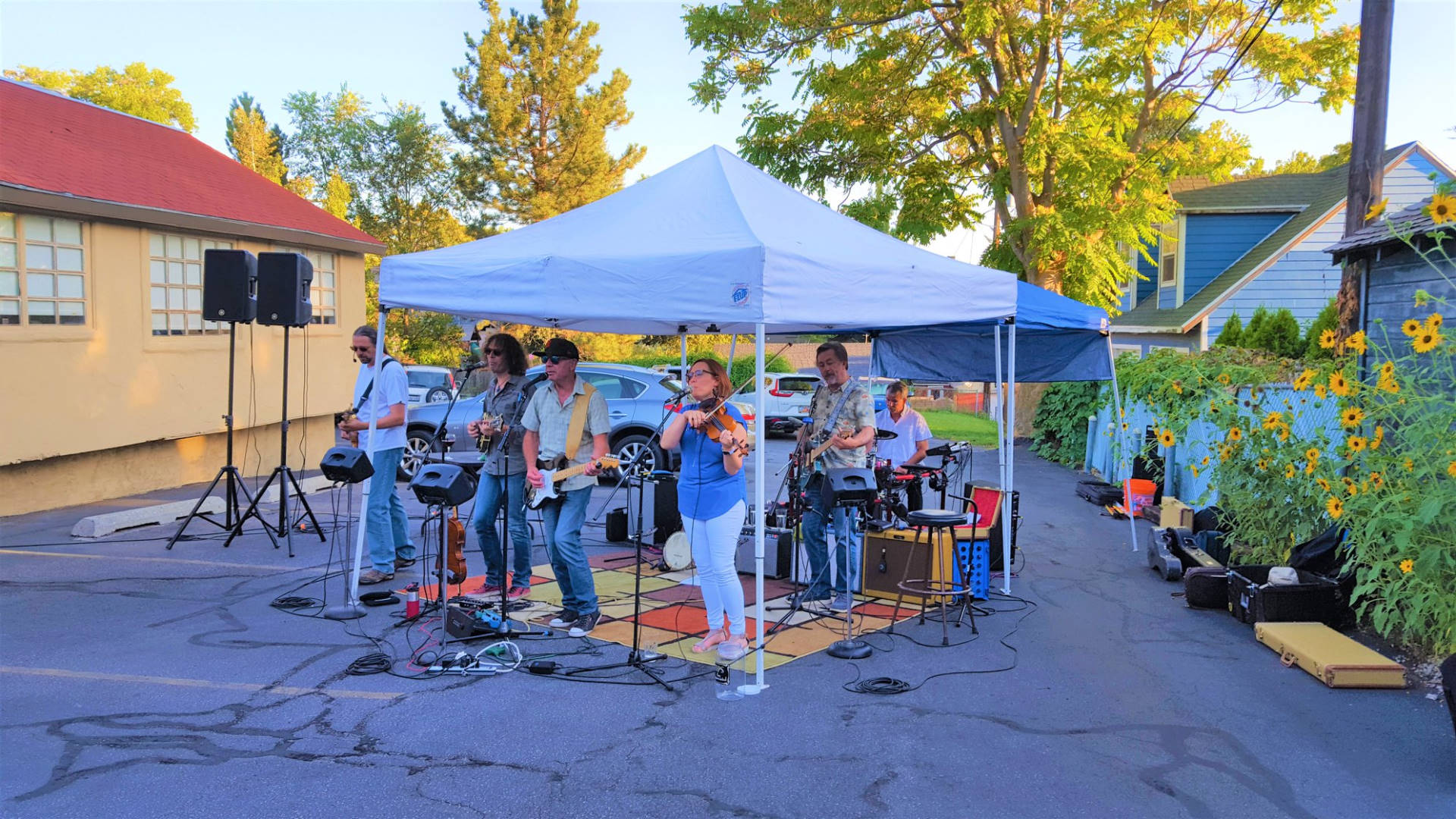Another take on a monoblock.
Please Remember:
The opinions expressed are mine only. These opinions do not necessarily reflect anybody else’s opinions. I do not own, operate, manage, or represent any band, venue, or company that I talk about, unless explicitly noted.

 Want to use this image for something else? Great! Click it for the link to a high-res or resolution-independent version.
Want to use this image for something else? Great! Click it for the link to a high-res or resolution-independent version.It’s tough to challenge our preconceptions, right? When deploying an audio system, you have a left and right, correct? That’s just how it’s done. You might have a center cluster as well, but really – you always deploy left and right.
Hey, let’s be honest. We like symmetry, and almost every performance is set up with the players in the center, so what do we do?
PA boxes left and right.
But sometimes you get to a gig, and you realize that a traditional L/R setup won’t do what you need…or is just pointless. That’s a great time to think about using the toys you brought in a different way. That’s exactly what happened for me at a recent Lazlos gig.
As we were loading in, we were informed that the layout of the dining tables would be different, and also that a certain homeowner was well and truly displeased about the music that had been lately pouring out of the restaurant’s lot. Standing there, looking at where our canopies were going to go, and thinking about what we were just told, I had a revelation.
There was no point, at all, in doing a traditional L/R deployment. The stage-left side of the PA would be doing nothing except either:
A) Missing the audience, if I kept the coverage away from the home in question, or
B) Hitting the same audience as stage right, but at a loss of coherence due to the delay (not that it doesn’t happen all the time – but still), and ALSO hitting the home that was having a problem with us.
In other words, going L/R stuck me with the choices of having “R” being a waste of power and coverage, or not being totally wasted but riddled with downsides.
At that point it seemed obvious to me that the solution was a “double-hung monoblock.” As I often do, the vocals would go through one output, and everything else would go through another. The only difference from a normal setup would be that we’d use two boxes total, instead of two pairs. Those two boxes would be set to cover the audience without line-of-sight to The House That Wished We Would Go Away.
Hence, a double-hung monoblock was what I did. It worked just fine, nobody noticed a lack of stereo (I mix The Lazlos in mono anyway, like the overwhelming majority of every show I do), and it didn’t work against us in regards to having someone call the police on the show. Sure, it didn’t LOOK like what people expected, but nobody cared – and all the coverage/ power in the equation was being used for the actual audience.